The Conference, Part Two
Phones with feelings, our multiple media personalities and more at Scandinavia’s largest technology and innovation conference


In Part One, we wrote about The Conference’s theme of taking grassroots action in media—people doing it for themselves. Another persistent subject, which kept rearing its futuristic head, was the concept of expressive technology. In contrast to the nefarious hidden nature of some technologies that James Bridle spoke about in his keynote—not least the trash cans that are now invisibly picking up our WiFi data as we walk past—the idea of outwardly expressive technology took on a rather friendly appearance.
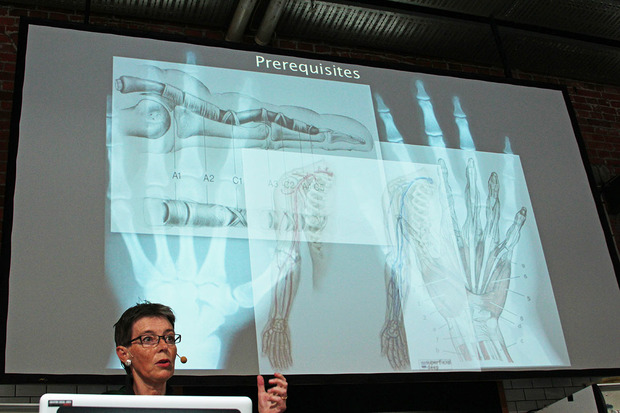
The Gesture
It all starts with the human hand, said Birgitta Rosén, a professor in occupational therapy from Lund University. The hand is an extraordinary piece of technology that was formed early in human evolution and drove the development of our brain. As Rosén highlighted, the hand can “perceive, execute and express all in the same moment,” and its great skill means that today it is our gateway to technology. So many of us are rarely more than a gesture away from a device of some kind or another.
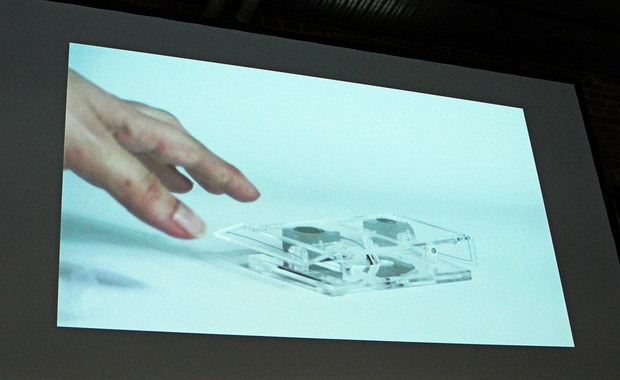
Opinionated Devices
This proximity between our hands and technology is the focus of Fabian Hemmert’s work at the Design Research Lab in Berlin. With our fingers almost constantly wrapped around our smart phones, Hemmert asks how we might feel if our devices were social beings. If they are really so “smart” wouldn’t they want to get to know us? First he showed prototypes of a phone that expanded and contracted according to its volume of data use and one that directed its user across a map by shifting its weight in the appropriate direction.
Then Hemmert showed a prototype phone that reacted to its user according to the frequency with which they used the device. Not enough use and the phone lifted itself eagerly towards the user, too much use and the phone would shrink away in a reclusive gesture like a frightened animal. The question that Hemmert poses is: What do we want our relationship with technology to be? Do we want it to have an opinion of us, or just obey our every command?
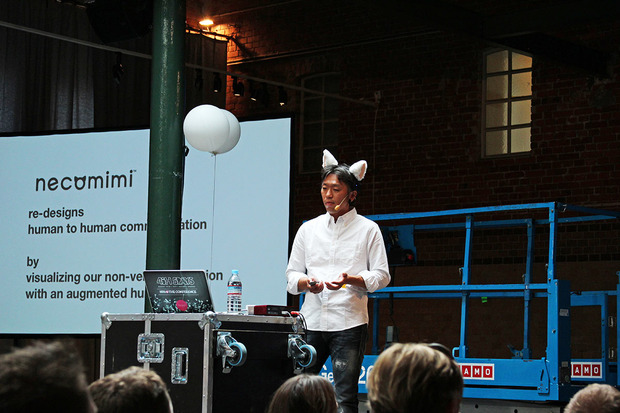
The Augmented Human Body
As our relationship with technology grows ever closer, so it becomes more intertwined. The most visible move towards this “singularity” at The Conference was demonstrated by the animated Necomimi ears worn by Tomonori Kagaya. These costume party-style ears are part of a Japanese project called Neurowear. Kagaya and his colleagues were inspired to create Necomimi (meaning cat ears in Japanese) by a very shy girl who wished she could find non-verbal ways of communicating her feelings to people.
Necomimi uses a piece of technology called ThinkGear that can read a person’s brain activity through a pad pressed to the forehead. When ThinkGear is combined with Kagaya’s programmed headgear, the ears move according to the wearer’s brain activity, perking up when the wearer is attentive and flopping down when their brain is at rest.

Constant Connectivity
The endearing and attention-grabbing Necomimi provoked some concern in the audience about technology replacing humans’ need to develop social skills, but according to Kagaya the ears act more as a catalyst for conversation rather than replacing verbal communication altogether. For Neurowear’s next trick they have developed a set of headphones called Mico that can select a music list from your subconscious. Kagaya’s vision of the future is an optimistic one where serendipity is greatly increased by the seamless integration of technology in our lives. “With 37 billion devices connected to each other by 2020, everything will be smart,” he stated.
Meanwhile, other speakers at the conference questioned the benefits of our constant connectivity. Teresa Belton, an educational researcher at the University of East Anglia, wonders whether children’s imaginations are being stifled as a result of over stimulation from TV and computers. Never being bored, she argues, does not allow us to develop our own thoughts and creativity. Denise Jacobs echoed these ideas in her talk about optimizing creativity, advocating for spending more digital down time “sitting with ourselves,” and walking in nature to generate creative flow.

Our Multiple Identities in Media
This perceived division between our offline and online activities was picked up by ethnographer Tricia Wang in her talk about “The Elastic Self.” Wang suggests that our identity is not fixed, but is more like a rubber band that can bend and stretch along a continuum, from the static and formal “prescribed self” to the multiple and playful “elastic self.” Exploring the ways in which people are expressing themselves online, Wang explains how users’ “informal modes of interaction” can escape the analytics of big data. Through her research she has shown how, instead of conforming to a single identity, people are embracing multiple versions of themselves through the plurality of Twitter, Tumblr and Facebook profiles.
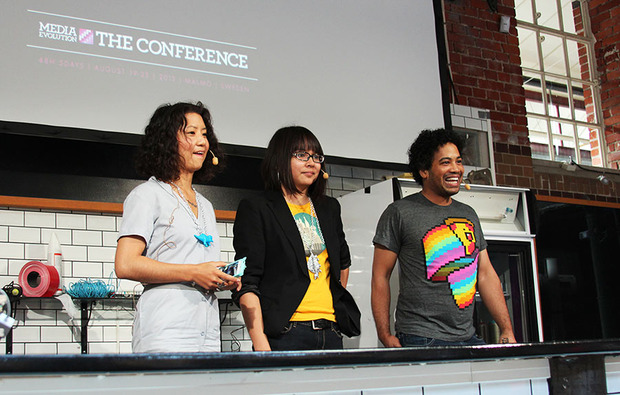
Digital Expression
While some voiced concern at The Conference about the long-term effects of spending the majority of our time connected to digital devices, there is no doubt that people are using that time in creative and expressive ways—from the serious yet playful protest memes that artist An Xiao Mina presented, to the vertiginous rise of the .gif file, which can so concisely animate our every emotion.
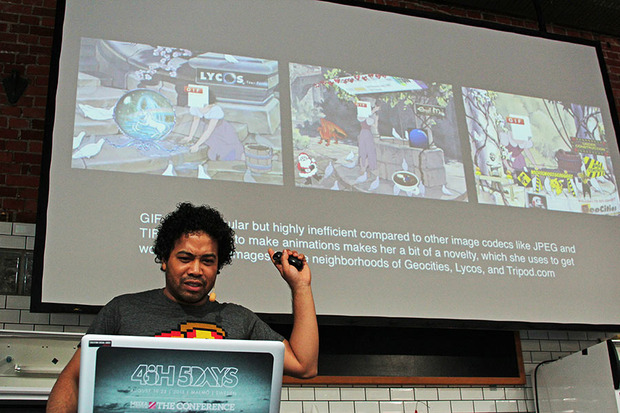
One of The Conference’s highlights was Kenyatta Cheese’s rendition of the .gif’s 30-year life story in an animated fairytale format. Snow White starred as the newly celebrated .gif while the evil queen took the dreaded role of Flash. You’ll have to watch Kenyatta’s hilarious talk to find out who the seven dwarves played, but it’s safe to say there was no shortage of creative expression in this digital fairy tale.
The majority of presentations at The Conference are available to watch online at Media Evolution.
Images by Leonora Oppenheim












